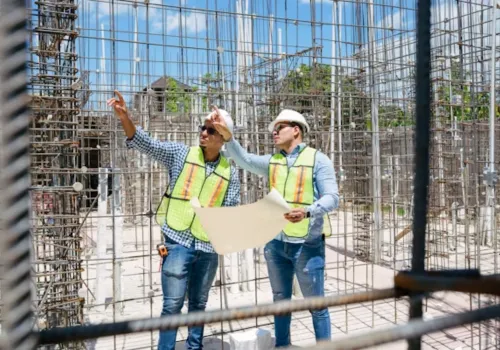
If you’ve ever searched for an affordable apartment in Massachusetts, you already know how daunting the process can be. Hours spent scrolling through listings, calling realtors, submitting applications, and enduring credit checks—all for the chance at securing a unit. And if you manage to lock one down, there’s still the matter of paying the hefty upfront fees and, of course, making rent each month.
The fundamental issue? Massachusetts simply doesn’t have enough housing to meet demand. When supply is tight, renters have fewer options, and landlords can charge higher rents.

Experts and developers agree on the solution: Massachusetts needs to build more housing—urgently. But that’s far easier said than done. The obstacles to new development are numerous, costly, and time-consuming.
Developers must first determine where new housing can realistically be constructed. While open land is abundant in some states, Massachusetts is one of the most densely populated places in the country, meaning that ideal construction-ready sites are in short supply.
“We really like to build around transit, convenient to retail services, access to major highways and thoroughfares to get to employment centers,” said Rich Mazzocchi, principal at Tremont Development Partners.
But finding land that meets those criteria is no easy feat—especially in already crowded areas like Boston, Cambridge, and Worcester.
When vacant land isn’t available, developers have two main alternatives:
In other words, developers don’t have many great choices. At times, it might feel like the only option left is to build in the harbor.
Once a developer secures land, the next step is designing the project. At first glance, this might seem like a straightforward process: decide the number of units, pick a building style, and move forward. But the reality is far more complex.
A developer must determine:
Money is at the center of every decision. Affordable housing designations come with subsidies, but they also reduce rental revenue. Fewer parking spaces might maximize the number of apartments, but zoning boards often require a minimum number per unit.
Developers must also work with local residents and businesses, who can oppose the project if they believe it will increase traffic, change the neighborhood’s character, or lead to higher property taxes. If they aren’t on board, they can stall or even block the project.
Even with a solid plan, developers still have to navigate one of the most difficult phases: securing approval from local planning and zoning boards.
Community meetings can be tense. Local officials consider concerns about traffic, infrastructure, and aesthetics. Planning boards often demand revisions, sometimes requiring additional environmental studies or infrastructure improvements.
Meanwhile, zoning boards decide whether to grant exemptions from local regulations. For instance, if a developer wants to reduce parking minimums for a new Worcester apartment complex, they need zoning board approval—which may come with conditions.
“Maybe we’ll allow for fewer parking [spots], but only if you actually increase the number of handicap-accessible spaces,” said Worcester Zoning Board member Jordan Berg Powers. “So you’re doing a dance with people.”
And it’s a long dance. Developers frequently return to zoning boards multiple times, negotiating changes along the way.
“It’s not uncommon for projects just to get scrapped,” said Mazzocchi, noting that one of his Boston apartment proposals took four years to get approved.
Even after overcoming these hurdles, a developer can’t immediately start building. First, they must secure building permits, a process that can take months and cost tens of thousands of dollars. Then comes the challenge of hiring contractors and dealing with a national labor shortage.
Developers also have to buy materials, and prices fluctuate wildly. During the COVID-19 pandemic, lumber and steel prices skyrocketed, forcing some projects to be delayed or redesigned. If material costs spike at the wrong time, a project may need to be paused indefinitely.
Once construction finally wraps up, the next step is filling the apartments. Given the severe housing shortage, competition is fierce.
Affordable housing units are often assigned through a lottery system, where hundreds or even thousands of applicants vie for a handful of spots. Market-rate units, meanwhile, are priced based on demand—and in Massachusetts, demand is always high.
Even after tenants move in, developers and property managers must deal with ongoing maintenance costs, property taxes, and insurance. And let’s not forget the inevitable plumbing issues, broken appliances, and leaking roofs.
“We’re in it for the right reasons—to address the housing crisis,” said Mazzocchi. “But the way that the projects are put together financially, we need to have enough revenue to cover all of our expenses.”

With high interest rates on developer loans, property taxes, and maintenance costs, keeping a building profitable is no small feat.
For renters struggling to make ends meet, knowing why Massachusetts has a housing shortage doesn’t make rent any cheaper. They can’t afford to wait years for new developments to go up and prices to come down.
Until Massachusetts streamlines the approval process, expands incentives for affordable housing, and tackles zoning restrictions, the state’s housing crisis is unlikely to be resolved anytime soon.
One thing is clear: building more housing is essential—but in Massachusetts, it’s anything but easy.
Originally reported by Sam Turken in GBH.